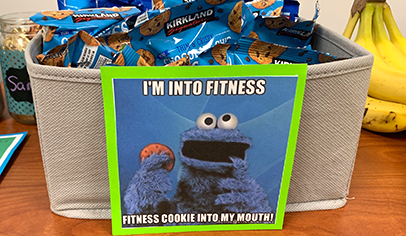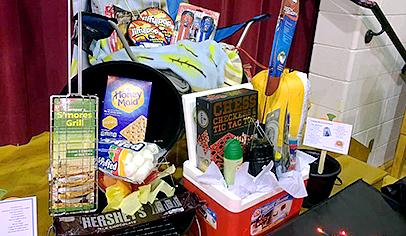You probably don’t think of “serving parents” as a goal for your PTO. You help the school and the students; parents should be serving the PTO, not the other way around. In truth, though, helping parents is probably the most important thing you can do to ensure the long-term health of your group and the school.
Research shows that when parents get involved in their children’s education, students do better in school, the school improves, and teachers are happier. That’s why the most successful groups focus on building a stronger connection with parents. They know that giving moms and dads a more positive image of their group and the school pays off in increased involvement. That translates into more volunteers, better fundraising, a stronger school community, and a better learning environment.
A key way to grow that connection is to make your group a resource for parents. You have access to valuable information and contacts that can help parents. You just need to put them to use.
Help for Newcomers
The PTO for the Maine School Administrative District 51, based in Cumberland, has a mentoring program for new families. Newcomers receive a list of names they can call, or they can request that someone contact them. The advice sought ranges from recommendations for pediatricians to where to get the best pizza in town, says PTO cochairwoman Gloria Nicholson. A more formal mentoring program at Our Lady’s Christian School in Erie, Pa., matches new and veteran families who have children of the same age.
Some parent groups assemble handbooks with tips on everything from what to do if your child is sick to the school’s visitor policy. Information like this is posted on a new parent webpage at Sylvan Park Elementary Paideia Design Center in Nashville, Tenn. It includes a map to illustrate the drop-off and pickup route and the ending time for kindergarten. The website address is posted on the school marquee as well as on a magnet sent home with students. “We encourage people to make it their homepage,” says PTO president Julie James.
PTOs also offer more general parenting resources. For example, the Lincoln Park (N.J.) Elementary PTO links to “Questions Parents Ask About Schools,”a free pamphlet from the U.S. Department of Education.
A Room of Their Own
Another approach is to make information accessible in a central location. The parent resource room at River Valley Middle School in Jeffersonville, Ind., has a rack of pamphlets, including one about a toll-free homework hotline. Families can call five evenings a week for help in math and science from students at nearby Rose-Hulman Institute of Technology.
At Fred S. Engle Middle School in West Grove, Pa., the PTO donated $1,000 to purchase nearly 100 books for parents to check out on topics like homework struggles, the teenage years, and talking to your child about sexuality. At Horace Mann Dual Language Magnet School in Wichita, Kan., the school district offers weekly evening classes in English and Spanish to equip parents to assist their kids. The PTO supplements this instruction with a resource room that has children’s books, flash cards, and board games.
Also effective are lectures or seminars. Some of the parents at the Montessori Institute of Broward in Davie, Fla., are professionals in health and nutrition and wanted to share their expertise. What started as an occasional seminar has grown into a schoolwide focus on safe, healthy lifestyles, driven by the PTO. This includes monthly lectures by parents and other community professionals. For example, a nutritionist discussed food labels, and a chiropractor talked about chiropractic care for children. Other topics included healthy diets, child development, meditation, and nutritional supplements. The PTO also emails parents about recalls of tainted food and unsafe toys.
Their most ambitious activity was a family health day one Saturday morning at the school. People moved among activities that included calisthenics and dance instruction, speakers on dental services, and car seat safety tests. “Parents are making changes and asking for more resources,” says PTO president Kelly Warfel.
Support From Each Other
Perhaps the most powerful resource is the opportunity for people to help each other. A “parents helping parents” group meets monthly at the Rio Rancho Public Schools Shining Stars Preschool in New Mexico. An announcement on the website for this school for children with special needs reads “Meet our moms, dads, and guardians who might be going through the same thing that you are with your child. You’re not alone.”
The group invites speakers on such topics as autism, multiple sclerosis, and attention-deficit/hyperactivity disorder, and they provide contact information about food stamps, Medicaid, and other resources. “Most parents are coping with their children’s needs, others are just getting the diagnosis, and some are afraid to ask questions,” says PTO president Elizabeth Struck. “The group is there for all that.”
After the school counselor at Ordway Elementary on Bainbridge Island, Wash., was murdered by his son last fall, the PTO brought in two counselors for a weekly two-hour support group. The conversations focused on how parents felt about what had happened and their own struggles. “We needed help,” says PTO president Janet Millerd. The group continued to meet for six months, until it was no longer needed.
Once a PTO makes itself known as a resource, parents will turn there first for assistance. The result is a closer and stronger school community where help is often just a phone call away. Says Rio Rancho’s Struck, “Parents know they can come to anyone at our school and ask any questions.”

























